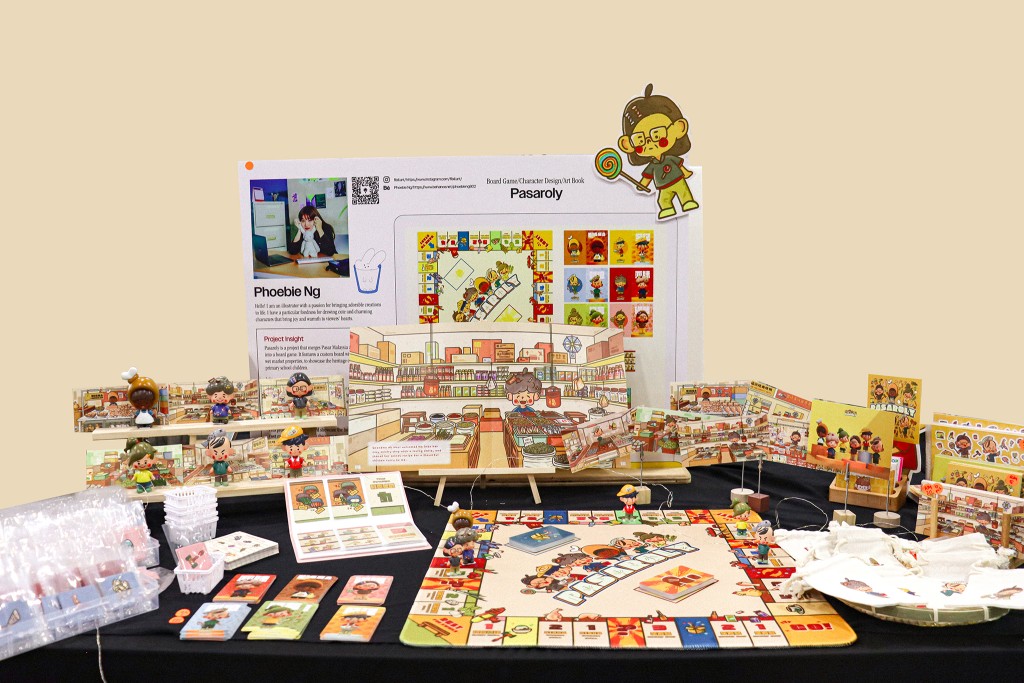Nowadays, the traditional pasar establishment is increasingly overshadowed by grocery chain stores and supermarkets. The modern conveniences not only threaten the livelihood of small business pasar owners and vendors, but also the cultural heritage and economic benefits of pasar markets. Sensing the urgency to preserve the unique pasar culture, I was compelled to capture and present the pasar experiences by creating a board game on the topic as my graduation project.
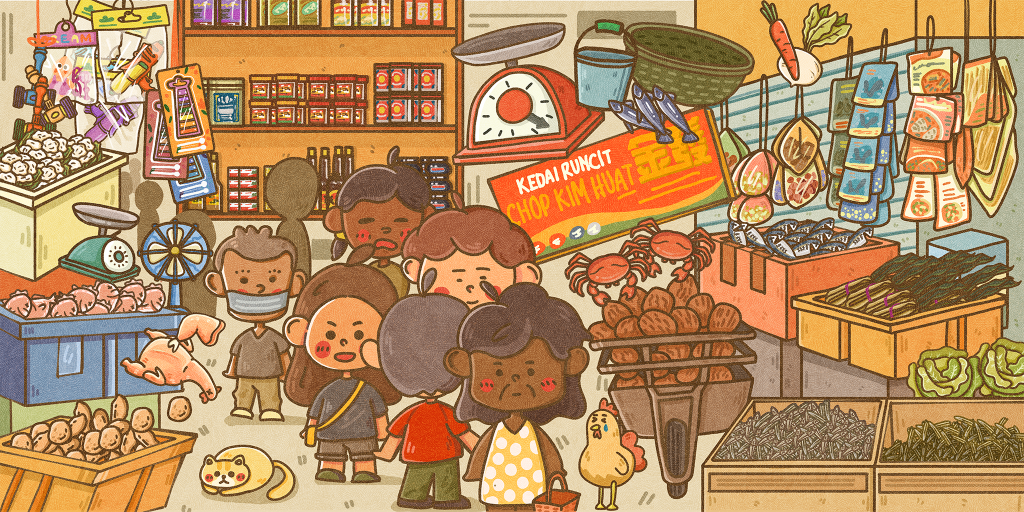
My idea for the project was to re-create the experiences of shopping at the pasar with a board game for primary school children. The aim of the game is to introduce the pasar environment and educate young players about the unique aspects of Malaysian small business culture. Naturally as my design project has an economic-theme, I based the idea on my favorite board game Monopoly.
The game Monopoly inspired me to design a game framework that not only entertains but also educates players about the different types of vendors and products that can be found in a traditional pasar market. The rules are simple, each player starts with a set amount of currency, and each is required to buy a list of random items usually sold at the pasar. Whomever buys all the items fastest and stays within their budget wins.


With the adaptation of Monopoly, my board game, “Pasaroly,” is designed to capture the pasar environment with representations of stalls and vendors, each with different items for sale and special characters that are associated with that particular pasar. The character designs are based on the usual sellers often found at the pasar market such as the sundry shop, fish stall, vegetable stall, chicken stall, sweets stall, and noodle stall. In this way, children can learn about the people that work at the pasar and what type of goods and groceries they could buy there.
During the process of designing the character designs for the player tokens in this game, I drew inspiration from real-life references in Pasar Besar Seremban, a place I have known since my childhood. The main character, Ah Mooi, is based on my own grandmother, while Ah Shao is inspired by the aunty from whom I used to buy sweets when I was a primary school child. In addition, players can also find the other characters’ original references at Pasar Besar Seremban!
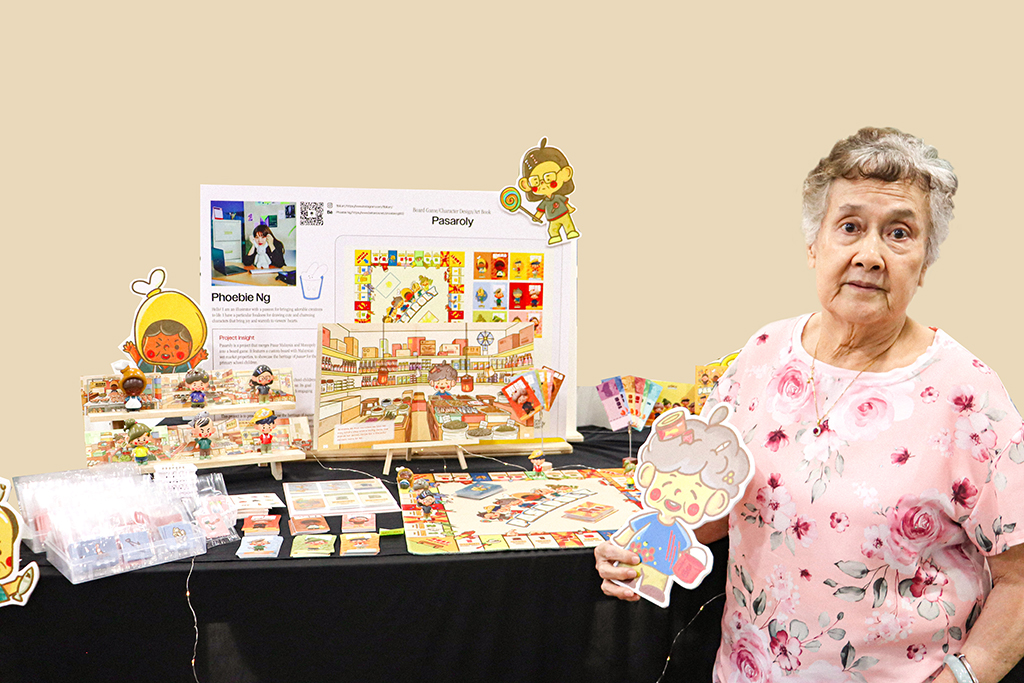

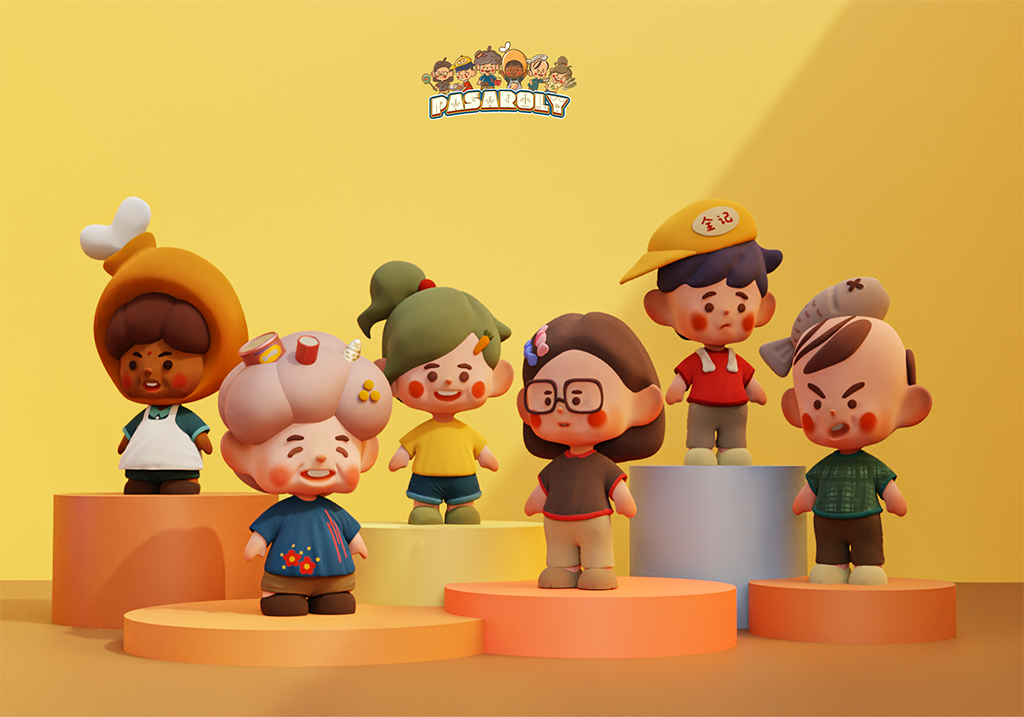

The general rule to play the game is that each player takes a turn rolling the die to move their game piece along the board. But when they land on a stall or vendor, they can choose to buy an item from that vendor using their money or continue moving. As the cost of each item is displayed on the board, the player is challenged to try to buy all items on their list while staying within their currency budget. The game ends when the listed items have been bought and the player who stayed within his/her budget wins the game.
Each vendor offers different items, and players must step into the correct numbered sections to purchase the specific items that they need. For instance, if he/she wants to buy carrots from Vegetable Stall No. 2 but lands on Vegetable Stall No. 1, they cannot purchase the carrots. Each vendor’s card displays the item and the available stock for one round. After each round, the stocks will be refilled. Additionally, for items measured by weight, such as red beans priced at RM4 per 50g, there is a limited stock of 50g available for each round. Other items such as garlic, have a specific quantity listed on the vendor’s card, indicating the number of garlic stock available (e.g., 3 garlic stocks) at a price of RM1 per garlic. After buying an item from the stalls, the player takes the corresponding item card from the storage box.
As players explore the vibrant game board, filled with colorful stalls, they need to keep an eye out for two types of cards that can spice up the shopping experience. The first type is the Challenge Card, which presents random fun and unexpected tasks for the players to complete. These challenges might help them earn extra money or face thrilling surprises! The second type of card is the Mystery Box where there are different types of grocery items popping out of each box. These Mystery Box cards may help players get what they want on their shopping lists.
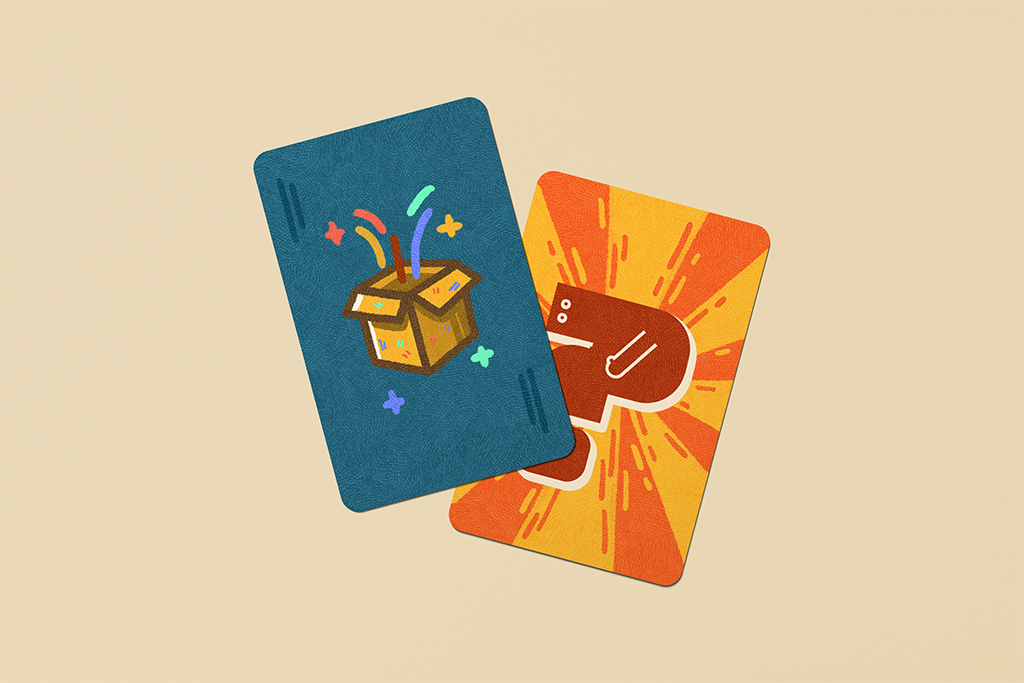
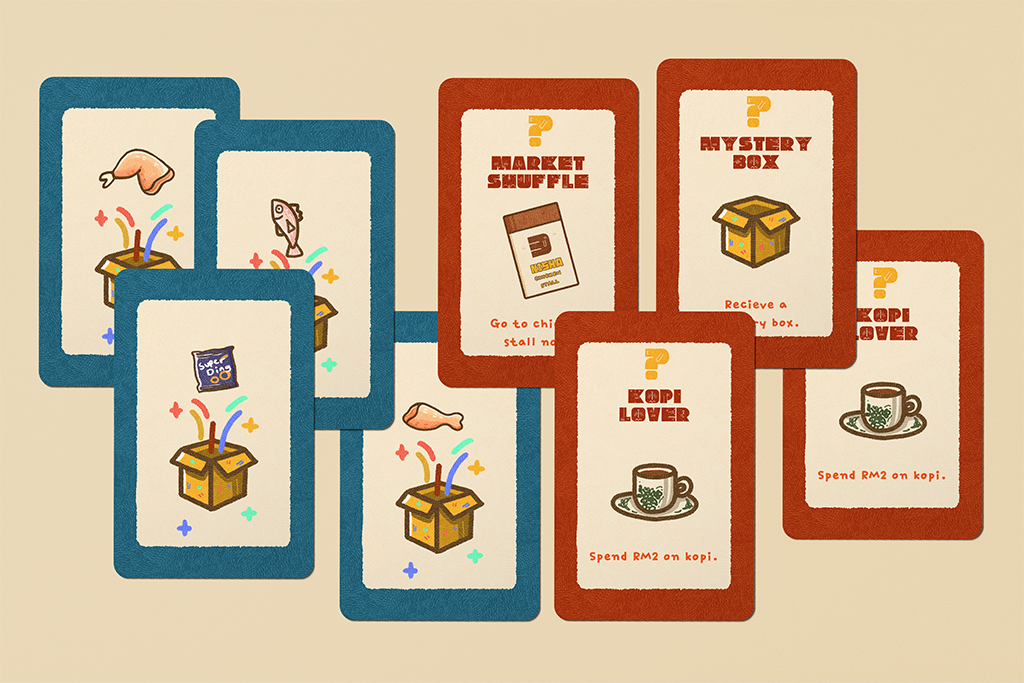
But players must also beware of the tempting traps and distractions along the way! Some boxes lure players with the aroma of fresh kopi, kuih, cendol, and more. While these snacks might seem irresistible, players must remember to stick to their shopping list and budget. The key here is to stay focused and make the wisest choices!
As part of the Pasaroly experience, the board game also comes with an art book that showcases the unique features of traditional Malaysian markets. It features colorful illustrations of the different types of vendors and products that can be found in a traditional pasar market.
My intention was to create an attractive and engaging visual experience for children. I also took the opportunity to incorporate the typeface that I had designed in the Advanced Typography module. By using customized typeface, I hoped to capture their attention and enhance their interaction with the art book. It was a rewarding experience to see my own typeface seamlessly blend with the artwork, making the project unique and appealing to primary school children.

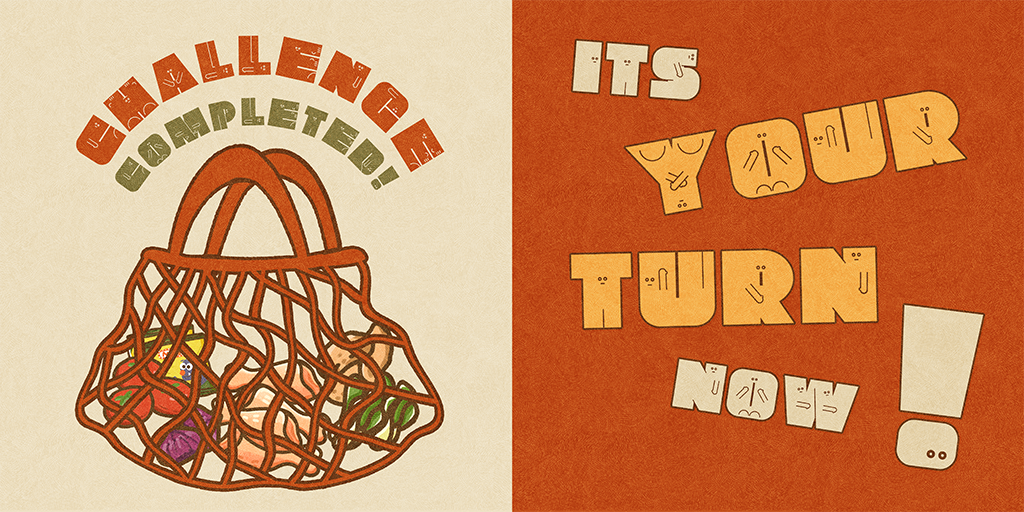
During the One Normal Event exhibition where we showcased our graduation projects, people who visited my booth were eager to share their memories and experiences at the pasar. One person mentioned they had not been to a pasar in a long time, but my project inspired them to consider going back and experiencing it again. It made me proud to see that my design had successfully raised awareness about Malaysia’s beautiful pasar culture and encouraged people to reconnect with this tradition.
Moreover, my grandmother, the original reference of the sundry shop vendor character, Ah Mooi, visited my booth and was proud of my project dedicated to preserving the pasar culture. She shared her own stories of the pasar, showing how much, it meant to her. Her emotional response made me feel that my project was on the right track in preserving our cultural heritage. Other visitors were also interested in her stories that showed how design can connect people and promote cultural understanding.
Through this project, I hope to bring the Pasar Malaysia experience to life in a way that is both entertaining and educational. Pasar is more than just a project to me, it’s a way of preserving my cultural identity and heritage and sharing my fondness for the place with my target viewers.
